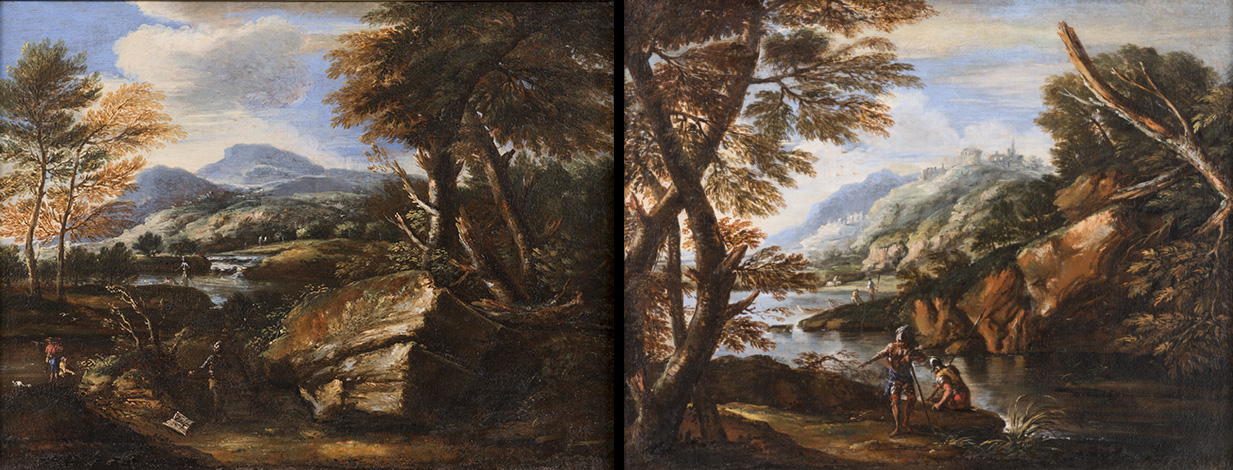SALVATOR ROSA

An artwork’s provenance is its history from the point of creation in the artist’s studio to the moment seen on the gallery wall. Provenance can encompass changing ownership, physical alteration, restoration, theft, return or donation. If an artwork was once owned by someone famous or a historical figure, that is part of the work’s provenance that usually increases the value of a given work. A painting’s provenance, if it has no gaps, ensures that the work is an authentic part of a given artist’s body of work, and ownership is unquestionable. An artist’s signature establishes provenance in the most straightforward way.
In 1812 the two Salvator Rosa paintings were on board an American ship that was captured by a British warship off the coast of Nova Scotia and brought to Halifax as a prize. During the War of 1812 between Britain and the young American republic, enemy ships would be captured and become the property of the victor. This included the cargo of the captured ship, which in this case included the forty-three artworks. The taking of prizes supplemented the income of the captain and crew during war in this era and was a state sanctioned activity. It differed from piracy only in that the state allowed it during periods of war. Anyone who has been to The Lower Deck or Split Crow pubs in Halifax will have heard the song “Barrett’s Privateers” by Stan Rogers, which is a fictionalized account of this practice.
When the paintings were seized off Nova Scotia, they were owned by an American originally from South Carolina named Joseph Allen Smith. Smith was an elite from a family that became wealthy from their plantation. As a younger son, of a second wife, Allen had the means to tour Europe, acquiring a taste for artworks and adventure. Smith is considered one of the first public art museum builders in United States history. He built a collection of artworks with the intention of donating it to a public art gallery so they can be enjoyed by all.
He is one of the first benefactors of this type in post-revolutionary America. The paintings seized off Nova Scotia were on their way to Philadelphia to be donated to the fledgling Pennsylvania Academy of Fine Arts.
A petition for the return of the seized artworks was sent on behalf of the Academy to the Court of the Vice-Admiralty in Halifax. The case was heard by Sir Thomas Croke, Justice of the Vice-Admiralty, poet, amateur artist and board member of King’s College. Croke ruled in his historic judgement that works of art should not be considered spoils of war, but “are admitted amongst all civilized nations, as forming an exception to the severe rights of warfare, and as entitled to favour and protection … as the property of mankind at large, and as belonging to the common interests of the whole species.”
After World War II, the issue of returning looted artworks to their rightful owners became a significant endeavour that to this day is not resolved. The U.S. Department of State cited Croke’s generous decision to return the artworks to The Pennsylvania Academy of Fine Arts as an ethical template for the protection of cultural property in times of conflict.
In 1952, two of the Salvator Rosa paintings that were brought to Halifax in 1812 were returned in the form of a gift. On behalf of the Pennsylvania Academy of Fine Arts, U.S. Consul General Cabot Coville presented these works to The Nova Scotia Museum of Fine Arts in honour of Croke’s decision.

